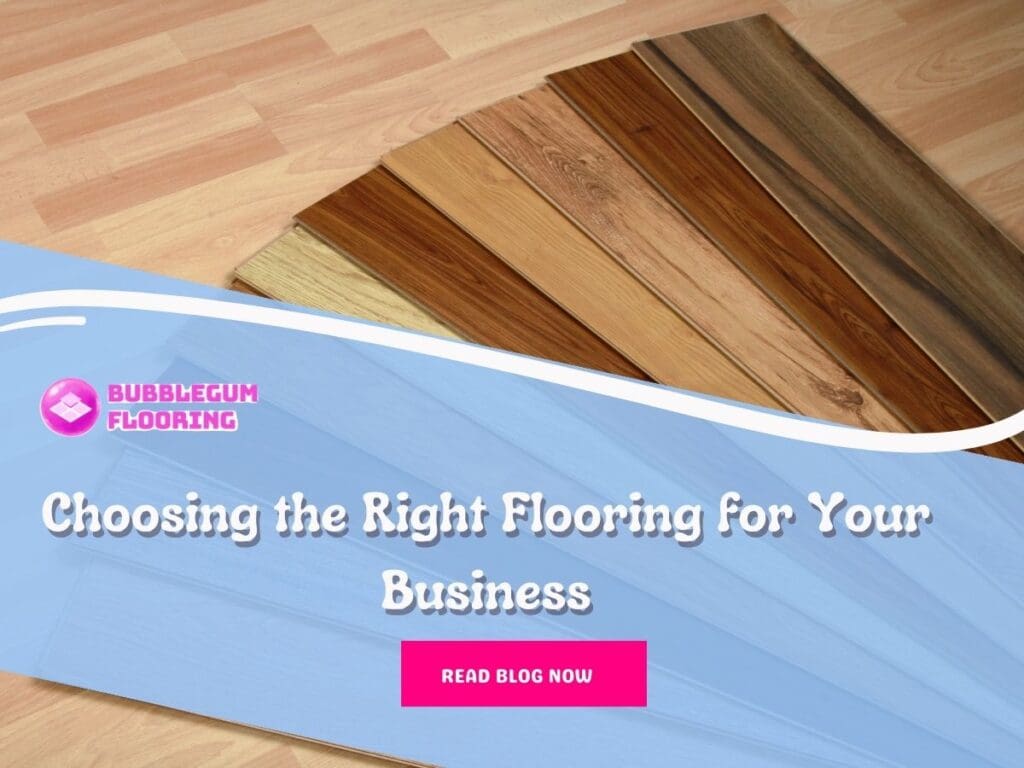When it comes to running a business, every decision matters, including the type of flooring you choose for your commercial space. The right flooring can withstand the demands of heavy traffic, create the perfect aesthetic, and remain beautiful for a long time.
With so many options available, it can be overwhelming to make a choice. Whether you’re looking for something that can handle constant foot traffic, is visually appealing, or is cost-effective, there are several factors to consider when choosing the right flooring for your business.
In this blog post, we will explore the different types of commercial flooring available and provide tips to help you find the perfect match for your space.
Selecting Appropriate Flooring for Your Business
Selecting the ideal flooring for your business is a crucial decision that combines both aesthetics and functionality. From creating a welcoming atmosphere for customers to ensuring durability in high-traffic areas, the right flooring choice can significantly impact the overall success and image of your commercial space.
Laminate Flooring
Laminate flooring is a versatile option for businesses aiming to achieve a high-end look without breaking the bank. It consists of multiple layers, including a decorative surface layer that replicates the appearance of natural materials like wood or stone.
Benefits of Laminate Flooring
- Cost-effective: Laminate flooring provides a cost-effective alternative to real hardwood or stone flooring.
- Easy installation: Its click-and-lock installation system makes it suitable for quick renovations.
- Low maintenance: Laminate is resistant to stains and easy to clean, making it ideal for busy commercial spaces.
- Durability: It can withstand moderate foot traffic and is suitable for areas like offices, retail shops, and waiting rooms.
Hardwood Flooring
When it comes to creating a sophisticated and timeless look for your business, hardwood flooring is the go-to choice. It adds an air of elegance and can enhance the overall aesthetic appeal of your space.
Benefits of Hardwood Flooring
- Classic aesthetics: Hardwood flooring exudes a timeless charm and sophistication that complements various business settings.
- Durability: With proper maintenance and refinishing, hardwood floors can last for decades.
- Easy to clean: Regular sweeping and occasional mopping are sufficient to maintain its luster.
- Customization: Choose from various wood species, finishes, and stains to match your business’s style.
Tile Flooring
Tile flooring is renowned for its durability, versatility, and aesthetic appeal. It comes in a wide range of designs, colors, and sizes, making it suitable for businesses with diverse style preferences.
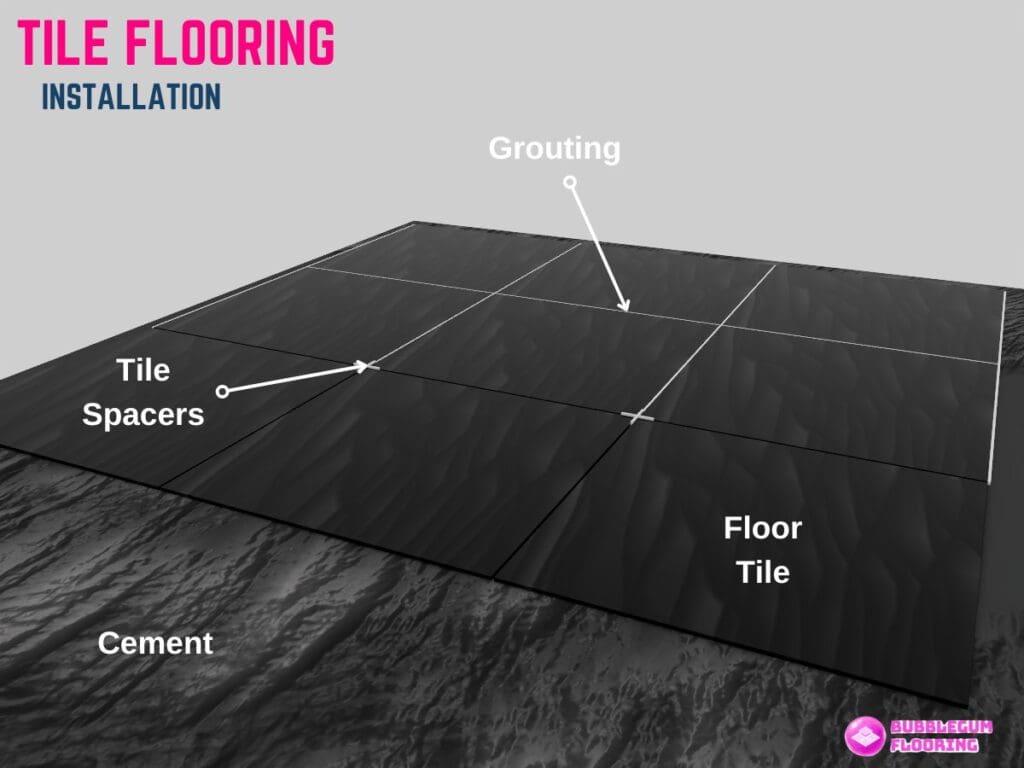
Benefits of Tile Flooring
- Design variety: Tiles offer endless design possibilities, allowing you to create a unique and visually appealing space.
- Durability: Resistant to water, stains, and wear, tile flooring is ideal for high-traffic areas and moisture-prone spaces.
- Easy maintenance: Regular sweeping and occasional mopping keep tile floors looking pristine.
- Hygienic: Tiles do not trap allergens, making them a good choice for healthcare facilities and restaurants.
Carpet Flooring
If comfort and sound absorption are priorities for your business, carpet flooring is an excellent choice. It provides a cozy and inviting atmosphere while minimizing noise.
Benefits of Carpet Flooring
- Comfort: Soft and cushioned carpet flooring adds warmth and comfort to your business space.
- Noise reduction: It absorbs sound, reducing echo and creating a quieter environment.
- Design versatility: Carpets come in various colors, patterns, and textures, allowing for creative design choices.
- Affordable: Carpet installation is generally more cost-effective than many other flooring options.
Concrete Flooring
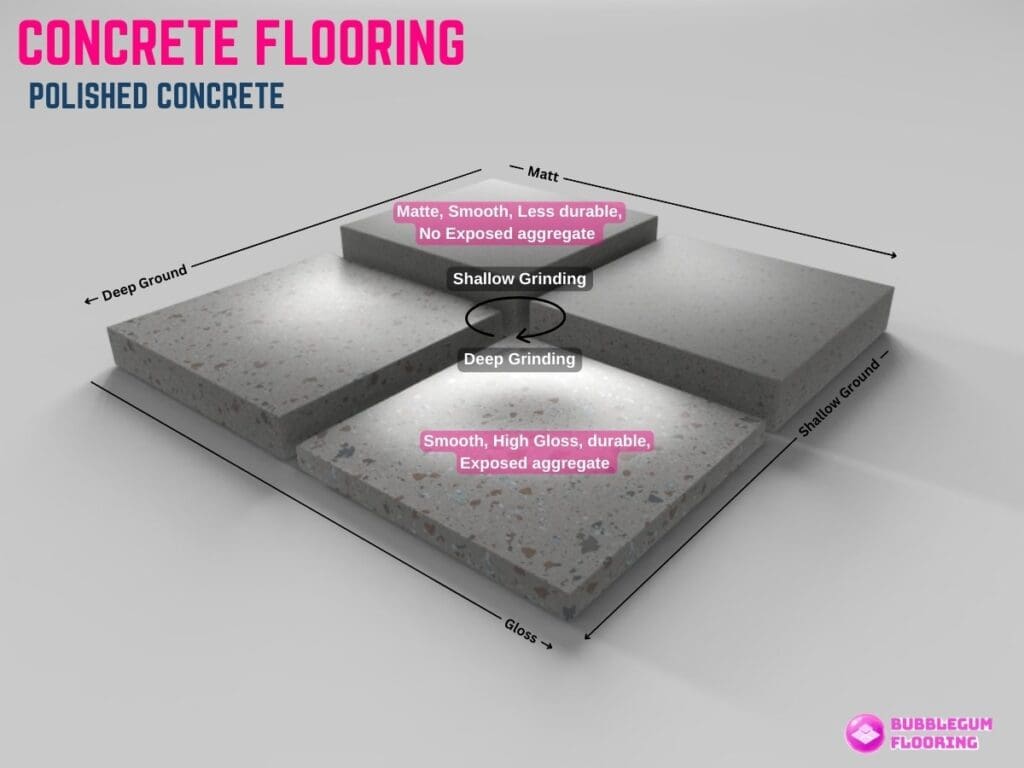
Concrete flooring has gained popularity in contemporary commercial spaces for its sleek, minimalist appearance. It’s especially favored in industrial and modern settings.
Benefits of Concrete Flooring
- Modern aesthetics: Concrete’s clean lines and industrial look are on-trend in many business environments.
- Durability: It can withstand heavy loads and is resistant to wear and tear.
- Customization: Staining, polishing, and stenciling options provide design flexibility.
- Low maintenance: Regular cleaning and periodic resealing keep concrete floors looking their best.
Rubber Flooring
For businesses prioritizing safety and resilience, rubber flooring is a practical choice. It offers excellent shock absorption and slip resistance.
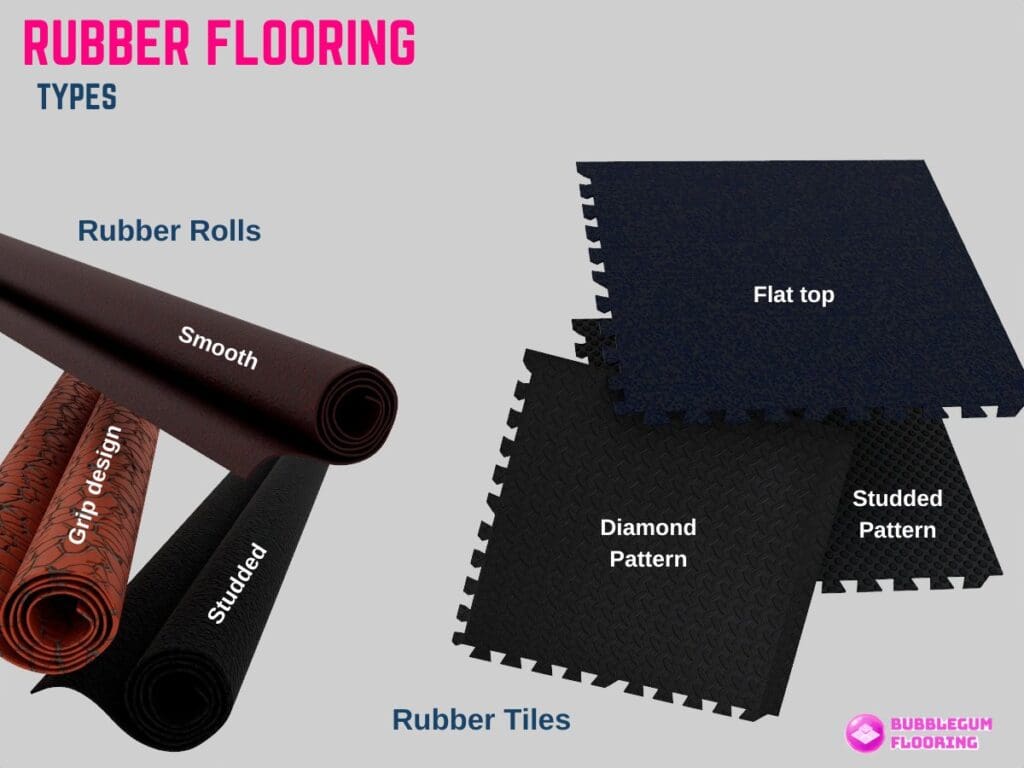
Benefits of Rubber Flooring
- Safety: Rubber flooring provides a cushioned surface that reduces the risk of slips and falls, making it ideal for gyms and healthcare facilities.
- Durable: It can withstand heavy use and is resistant to wear, tear, and moisture.
- Sound reduction: Rubber floors help dampen noise, creating a quieter environment.
- Low maintenance: Regular cleaning keeps rubber floors in top condition.
Factors to Consider When Choosing Flooring for Your Space
Selecting the right flooring for your space is a significant decision that can impact both the aesthetics and functionality of your environment. Whether you are renovating your home, office, or commercial space, several crucial factors should guide your decision-making process. We’ll now explore these key considerations to help you make an informed choice that suits your needs and preferences.
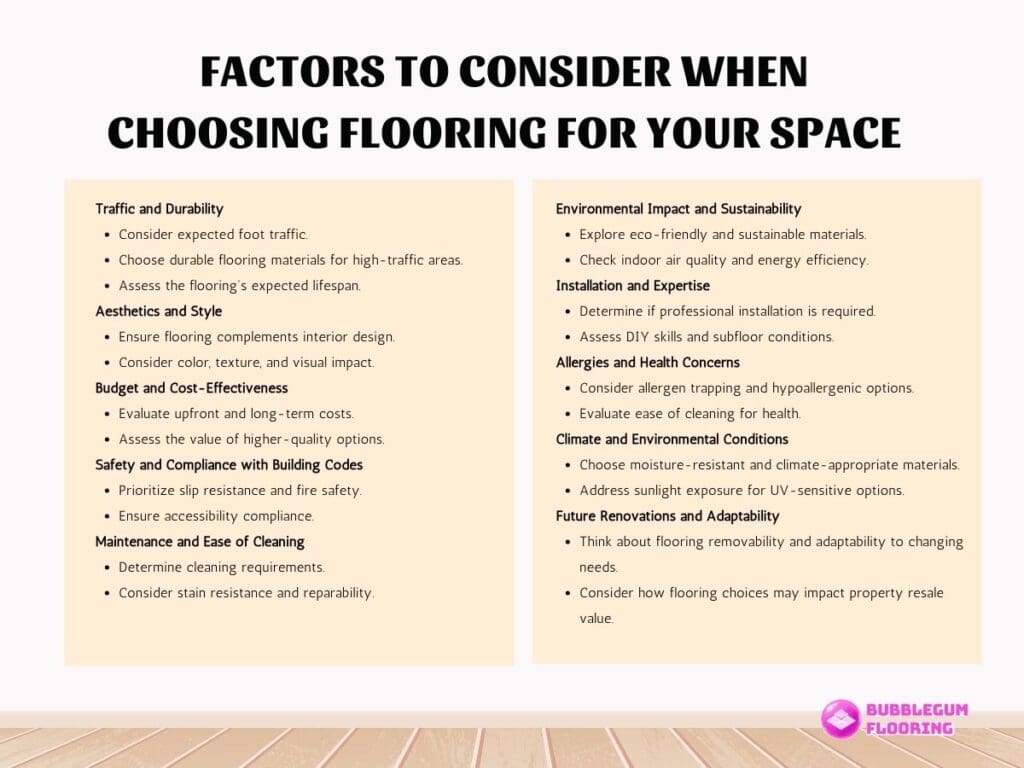
Traffic and Durability
Traffic and durability are among the most critical factors when selecting flooring. The level of foot traffic your space experiences can significantly affect the lifespan and maintenance requirements of your flooring.
Considerations:
- Foot Traffic: Determine the expected level of foot traffic. High-traffic areas, such as entryways and hallways, require more durable floorhttps://www.bubblegumflooring.com/flooring-installation-mistakes-to-avoid/ing.
- Durability: Choose flooring materials that can withstand the wear and tear associated with your space’s activity level.
- Longevity: Assess the expected lifespan of the flooring material to determine its cost-effectiveness over time.
Aesthetics and Style
The aesthetics and style of your flooring contribute to the overall look and feel of your space. The flooring material you choose should align with your design preferences and the atmosphere you want to create.
Considerations:
- Design Compatibility: Ensure that the flooring material complements your existing or planned interior design.
- Color and Texture: Consider the color palette and texture of the flooring in relation to the overall aesthetics.
- Visual Impact: Think about how the flooring will contribute to the visual appeal and ambiance of your space.
Budget and Cost-Effectiveness
Budget and cost-effectiveness play a significant role in the flooring selection process. It’s essential to balance your desired flooring with your available budget.
Considerations
- Initial Cost: Evaluate the upfront cost of purchasing and installing the flooring material.
- Long-Term Costs: Consider maintenance, repairs, and the expected lifespan of the flooring to assess its overall cost-effectiveness.
- Value: Determine whether investing in higher-quality flooring may offer better long-term value, even if it involves a higher initial cost.
Safety and Compliance with Building Codes
Safety and compliance with building codes are paramount when choosing flooring, especially in commercial or public spaces. Ensuring your flooring meets safety standards and local building codes is essential.
Considerations
- Slip Resistance: Choose flooring materials with adequate slip resistance, particularly in areas prone to spills or moisture.
- Fire Safety: Ensure the flooring meets fire safety regulations and is suitable for your space’s occupancy type.
- Accessibility: Comply with accessibility standards, including requirements for wheelchair accessibility and transitions between different flooring types.
Maintenance and Ease of Cleaning
Maintenance and ease of cleaning are crucial factors that influence the long-term upkeep of your flooring. Consider how much time and effort you are willing to invest in maintaining your chosen flooring material.
Considerations
- Cleaning Requirements: Determine the cleaning methods and products needed to keep the flooring clean and well-maintained.
- Resilience to Stains: Some flooring materials are more stain-resistant than others, making them suitable for areas prone to spills.
- Repairs: Assess how easy it is to repair or replace damaged sections of the flooring when necessary.
Environmental Impact and Sustainability
Considering the environmental impact and sustainability of your flooring choice is increasingly important in today’s eco-conscious world. Sustainable flooring options can help reduce your environmental footprint.
Considerations
- Eco-Friendly Materials: Explore flooring materials made from renewable or recycled resources.
- Indoor Air Quality: Choose flooring that meets indoor air quality standards and emits fewer volatile organic compounds (VOCs).
- Energy Efficiency: Some flooring materials, like certain types of carpet, can contribute to insulation and energy efficiency in your space.
Installation and Expertise
The installation process and required expertise can vary significantly depending on the flooring material you choose. Understanding these factors is essential to ensure a successful installation.
Considerations
- Professional Installation: Determine whether the flooring material requires professional installation and factor in installation costs.
- DIY vs. Professional: Assess your own DIY skills and whether you’re comfortable with DIY installation for certain materials.
- Subfloor Requirements: Consider the condition of your subfloor and whether it needs preparation or repair before installation.
Allergies and Health Concerns
For those with allergies and health concerns, flooring can play a significant role in indoor air quality and overall well-being. Selecting the right flooring material can help create a healthier environment.
Considerations
- Allergen Trapping: Some flooring materials, such as carpet, can trap allergens like dust and pet dander.
- Hypoallergenic Options: Explore hypoallergenic flooring materials that are less likely to trigger allergies.
- Cleaning for Health: Consider how easily the flooring can be cleaned to maintain a healthy indoor environment.
Climate and Environmental Conditions
The climate and environmental conditions of your location can impact the performance and longevity of your chosen flooring material. Different climates may require specific considerations.
Considerations:
- Moisture Resistance: In humid or damp climates, opt for flooring materials that resist moisture and are less prone to warping or mold growth.
- Temperature Variations: Extreme temperature variations can affect certain flooring types, so choose materials that can handle your region’s climate.
- Sunlight Exposure: Direct sunlight can fade certain flooring materials, so consider UV-resistant options for sun-exposed areas.
Future Renovations and Adaptability
Finally, think about future renovations and adaptability. Your flooring choice should be flexible enough to accommodate changes in your space over time.
Considerations
- Removability: Some flooring materials, like carpet tiles, are easier to remove and replace when you decide to renovate.
- Changing Needs: Consider how adaptable the flooring is to changes in your space’s purpose or layout.
- Resale Value: Think about how your flooring choice may impact the resale value of your property in the future.
How to Know When It’s Time to Replace Your Flooring
Choosing a local, family-operated roofing company isn’t just about fixing your roof; it’s about investing in your community and ensuring a level of service, expertise, and care that goes beyond the ordinary. These businesses are a testament to the power of tradition, trust, and community engagement in the construction and home maintenance industries.
Now that we’ve explored the benefits of supporting local businesses let’s shift our focus to another crucial aspect of home improvement. In our upcoming blog, “How to Know When It’s Time to Replace Your Flooring,” we’ll delve into the signs, considerations, and expert advice that will help you make informed decisions about your home’s flooring. Stay tuned for valuable insights to keep your living space looking and feeling its best!

